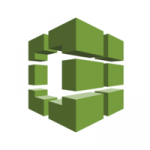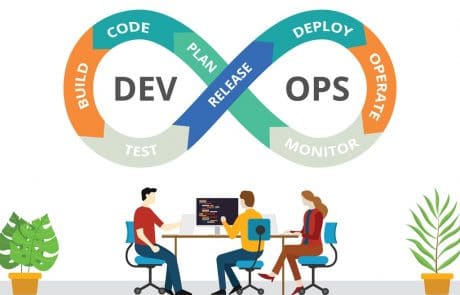What is AWS DevOps?
To get a better grasp of what is AWS DevOps, let’s take a look what is a pure DevOps itself. Let’s have a look at some ‘cultural’ underpinnings fostering the creation of this new IT movement, profession, and practice.
In the IT industry, everything starts with an idea for a solution. The goal of any IT project is to either improve or introduce a new function that generates value both for the end-users and the product owner (entrepreneur).
Businesses pursue an agenda of growing their revenues through attracting more users with better offerings. Nonprofits pursue some idea that could be turned into a solution, improving someone’s life or benefiting society as a whole.
To achieve those goals, an idea has to be transformed into an IT product. At this point, things can go awry as different parties end up having somewhat contradicting agendas:
- The IT customer wants to create an innovative product and successfully launch it to the market
- The developer wants to ship a robust, secure and functional IT solution
Initially, it may seem that their goals align. But these two sides often have a completely different understanding of what constitutes an end-product.
Most developers consider the final IT solution (built up to customer’s specs) as the end-product. They will sign things without tackling its deployment on the customer’s server because ‘that’s not their area of competence’. While the customer expected to receive an up-and-running product that can be immediately delivered to users.
What we have as a result is a disappointed and somewhat baffled customer and a developer who can’t wrap his mind about what went wrong.
Here’s another example. At some point, every company decides that there’s a need to improve an existing software product resting on its servers. Making changes to an existing ecosystem, however, is neither fast nor easy. Here’s why:
- Two different people (or teams) initially worked on the software. The developer wrote the code and the operational specialist was responsible for deployment.
- Both operated as separate entities, in-the-dark and had a little-to-no idea of how the other party organized things at their end.
- And in between, them stood a ‘lost’ client. Why ‘lost’? Well, because few product owners can precisely estimate the scope and volume of work ahead.
- They didn’t quite understand how things should be integrated and orchestrated from the very start. Instead, they go with the flow up till the point when making any systemic changes would be too late.
Alas, now we have two people – a developer and an IT operations specialist – separated by a figurative wall. That wall is a product none of them fully understands. And they are trying to find common ground to make things work between them.
DevOps(acronym for development and operations) movement emerged as this aspiration to ‘break the wall’ and “close the gap” between the two IT functions – “developers” and “operations”. And this gradual unification proved to be highly beneficial both for businesses, and IT specialists.
To sum up, DevOps stands for a set of practices aimed at establishing better collaboration between the Devs and Ops; as well as helping businesses or nonprofits develop, update and deploy new applications faster.
DevOps is:
- a movement
- collective intelligence
- tight collaboration between developers and operations staff
- an organizational method
- a profession that demands continuous learning
Table of Contents
What Does a DevOps Engineer Do?
DevOps engineer is a ‘central control point’ syncing work performed by a development team with operations and infrastructure support teams. The main function of DevOps is to facilitate the creation of a unified software development life cycle that includes seamless development, deployment, and release of new products.
The key functions of such engineer include:
- minimizing inefficiencies in the entire product life cycle
- introducing a greater level of automation
- ultimately accelerate time-to-market and time-to-fix for new applications
Wondering how a DevOps engineer looks in real life? Most likely, it’s either a former senior system administrator or a former IT developer. It’s a person who’s well in-the-know of all the product features and all the organizational roles.
They maintain direct contact and gather feedback from all the teams and the business when it comes to IT product features.
If you are planning to hire or promote someone for this role, you should not just seek out a tech-savvy candidate who can decipher all the code changes and always has a valid explanation for unusual server spikes.
It’s worth considering a naturally curious person, who has a strong affinity towards the product and is a great communicator. The ideal DevOps specialist knows how to uncover and fix issues that hinder the product’s performance.
What are DevOps Tools?
The popular tools of the trade include:
- Jenkins
- Vagrant
- Kibana
- Zabbix (monitoring system)
- PagerDuty
- Prometheus (monitoring system)
- Ganglia
- Snort
- Splunk
- Docker
- New Relic APM
- Grafana
- And others
What is AWS DevOps?
AWS (Amazon Web Services) – a popular cloud services provider – offers a variety of proprietary tools for establishing DevOps practices in the cloud.
“DevOps on AWS” is a collection of tools and services that can help:
- automate low-value manual tasks;
- manage complex environments;
- increase the overall efficiency of all the processes in the software development life cycle.
What are AWS DevOps Tools?
AWS CodeStar
If you want to fully focus on running apps on AWS, CodeStar facilitates app development, building, and deployment on AWS services and instances. It’s a one-stop-shop tool for managing the entire product life cycle.
AWS CodePipeline

A service for rapid application development, testing, and deployment that allows you to model a full release process for your software.
AWS CodeBuild

A fully managed service that helps you compile source code, test your app and prepare a deployable software package.
AWS CodeDeploy

Another fully managed solution for automating software deployments to the cloud or local environments. Helps avoid downtime during deployments.
AWS Lambda

Lambda enables you to deploy code without building a traditional infrastructure from the ground. All you have to do is upload the app source code, and the rest is configured in line with the provided usage and scaling rules.
Amazon EC2 Container Service (ECS)

If your goal is to use containers at some stage of your project (or you are already doing so), Amazon ECS will let you run Docker containers on a scalable cluster without much hassle.
AWS CloudTrail and CloudWatch
The next two Amazon tools will make your life easier when it comes to monitoring, logging and data collection:
- AWS CloudTrail will show you “who did what on AWS” and provide data on API calls to various services and resources.
- AWS CloudWatch provides you with an overview of what’s happening on AWS, plus records all the events for a certain service or application.
AWS Elastic Beanstalk

A handy service for deploying and scaling applications using custom rules. The service supports apps written in Java, .NET, Node.js, Ruby, Go, Python, PHP, and Docker, using standard web servers such as Apache, IIS or Nginx.
How the Romexsoft Team Can Help You
Our AWS-certified team can assist you with cloud app development and deployment, as well as DevOps Consulting Services and 24/7 DevOps Support. No matter what we do, we always rely on the best DevOps practices. Contact us today for more details!


